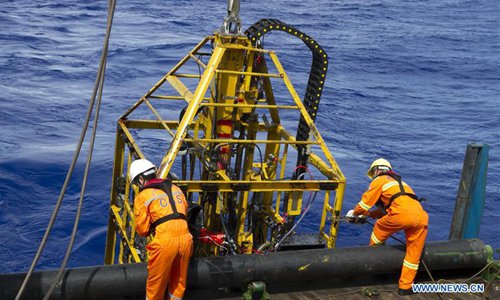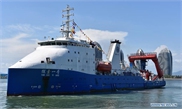
Chinese marine research vessel Haiyang 6 (Ocean 6) carries out deep sea shallow drilling operation during its exploration mission in the Western Pacific ocean, Sept. 23, 2019. Chinese marine research vessel Haiyang 6 (Ocean 6) has completed its deep-sea exploration mission in the Western Pacific ocean after 122 days and 35,000 km at sea. The vessel returned to Guangzhou on Wednesday. (Xinhua)
China's scientific research ship Exploration 2 returned to port on Monday, after completing a sea test of a deep-sea in-situ laboratory in the South China Sea.
The voyage was organized by Institute of Deep-sea Science and Engineering of the Chinese Academy of Sciences (CAS) and is aimed at verifying the underwater performance and operation reliability of the deep-sea in-situ scientific experiment station designed by CAS.
The sea tests have confirmed the operability for the main functions of the deep-sea base station, and verified the capability of the system control, energy management and communication system, according to Chen Jun, an associate research fellow of Institute of Deep-Sea Science and Engineering of CAS.
“The whole system operated on a stable basis for seven days at a seafloor depth of more than 1,400 meters,” Chen said.
The deep-sea in-situ scientific experiment station represents new scientific equipment based on modular design and deep-sea base station which enables long-term in-situ experiments and continuous scientific operation on the seabed while allowing for information exchange between the scientific experiment station and control center.
Global Times

